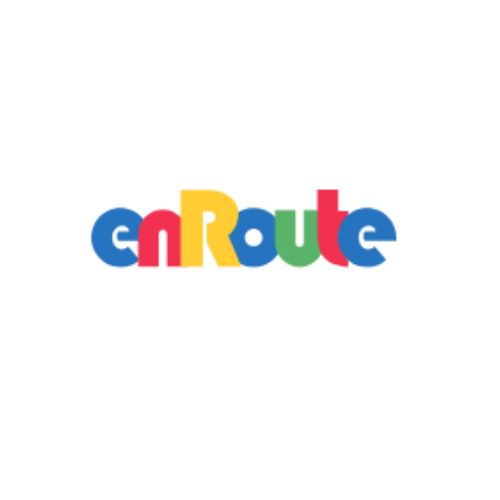In the evolving landscape of digital marketing, advertisers are continually seeking innovative ways to reach consumers. One such emerging avenue is rideshare advertising. With the global rise of services like Uber and Lyft, the gig economy has not only transformed transportation but also opened up new marketing real estate. Rideshare advertising integrates brand messages directly into the daily commute of urban dwellers, offering a unique blend of mobility, visibility, and data-driven precision.
The Rise of Rideshare Platforms
Growth of the Gig Economy
Over the past decade, the gig economy has seen tremendous growth, with rideshare platforms like Uber, Lyft, DiDi, and Bolt leading the way. These services have redefined urban mobility, offering a convenient alternative to traditional taxis and public transport. According to industry reports, millions of rides occur daily across the globe, creating a vast, mobile audience ripe for engagement.
A Captive and Targeted Audience
Unlike other advertising channels, rideshare services offer a semi-captive audience. Passengers often spend 10 to 30 minutes in the car, often idle or browsing on their devices, making them more receptive to advertisements. This environment provides advertisers with a rare window of uninterrupted attention.
Forms of Rideshare Advertising
Rideshare advertising can take several forms, each with its advantages and limitations depending on the campaign objectives and target demographic.
In-Car Advertising
In-car screens and tablets are one of the most common formats. Companies like Firefly, Octopus, and Vugo install digital displays inside vehicles that show interactive ads, news, games, or branded content. These devices often collect data on passenger engagement, enabling brands to measure ad performance more effectively.
Car Wraps and Exterior Ads
Another approach is vehicle-based advertising using vinyl wraps or digital roof-top screens. These mobile billboards can target specific geographic locations and demographics based on the driver’s route history or event-driven traffic patterns.
Sampling and Product Placement
Some campaigns go a step further by placing samples or branded materials inside the car. This physical engagement can be particularly effective for food and beverage companies, cosmetics, or tech accessories.
Benefits of Rideshare Advertising
High Reach and Visibility
Rideshare vehicles are constantly on the move, particularly in high-traffic urban areas. Exterior advertising on these cars gains exposure not only to passengers but to pedestrians and other drivers, creating a broad, repeated impression.
Geo-Targeting Capabilities
One of the most significant advantages of rideshare advertising is the ability to geo-target specific areas. Brands can focus their messaging in particular neighborhoods, during certain times of day, or even around major events, ensuring a high degree of relevance.
Measurable Impact
Digital rideshare platforms offer sophisticated analytics. Advertisers can track views, clicks, passenger demographics, ride duration, and even conversion rates. This data-driven approach allows marketers to optimize campaigns in real-time.
Challenges and Considerations
Regulatory and Privacy Issues
As with many digital marketing innovations, rideshare advertising raises concerns around privacy and data security. Location-based tracking, in particular, must comply with regulations such as GDPR and CCPA. Transparency in data usage and user consent is critical.
Driver Consent and Incentives
Not all drivers are willing to participate in advertising programs, particularly those involving vehicle wraps or in-car installations. For adoption to scale, incentive structures must fairly compensate drivers for their time, vehicle space, and potential inconvenience.
Ad Fatigue
With consumers exposed to thousands of ads per day, there’s a risk of oversaturation. Poorly targeted or intrusive rideshare ads can lead to negative brand perception. Creative, non-disruptive content is key to maintaining audience interest.
Comparing Rideshare Ads to Traditional Channels
Versus Billboards and Transit Ads
While traditional billboards offer high visibility, they lack the mobility and targeting precision of rideshare ads. Public transit ads also reach a large audience but are fixed in location and offer limited interactivity.
Versus Digital and Social Media Ads
Rideshare advertising can complement digital campaigns by reaching consumers in a physical, real-world context. Unlike banner ads or social posts that can be easily scrolled past or blocked, rideshare ads are harder to ignore during a 15-minute ride.
Future Trends in Rideshare Advertising
Integration with Augmented Reality
As AR technology matures, brands may begin to integrate AR experiences into rideshare environments. Passengers could scan QR codes to interact with 3D models, games, or virtual try-ons during their ride.
Dynamic and Real-Time Campaigns
Future ad platforms may allow for campaigns to change dynamically based on traffic patterns, weather, or local events. This real-time flexibility could significantly enhance relevance and engagement.
Expansion Beyond Passenger Cars
While rideshare passenger vehicles are currently the main focus, advertising could expand to food delivery services, autonomous vehicles, or even micromobility (e.g., e-scooters and bikes) as these services scale.
Ethical and Social Implications
Environmental Considerations
Increased advertising on rideshare vehicles could encourage more vehicles on the road, potentially contradicting sustainability goals. On the flip side, ad revenues could help subsidize the cost of electric vehicle adoption among drivers.
Impact on Public Space
As more vehicles become moving billboards, there’s a broader conversation to be had about the commercialization of public space. Policymakers and communities may need to weigh the benefits of revenue and innovation against visual clutter and public interest.
Conclusion
Rideshare advertising represents a compelling evolution in digital marketing, merging physical and digital realms in a novel way. With the ability to target, measure, and creatively engage audiences on the go, it holds promise for brands seeking to stand out in a crowded marketplace. However, like any emerging channel, it comes with its own set of challenges—ethical, logistical, and regulatory. As the technology matures and adoption grows, rideshare advertising may well become a cornerstone of integrated marketing strategies for the digital age.





Comments